In the animal kingdom, apex predators reign supreme, sitting at the top of the food chain with no natural enemies. These masters of survival come in all shapes and sizes, from tiny but fierce hunters to gigantic beasts that dominate their habitats. In this list, we’ve ranked 50 apex predators by size, starting with the smallest and working our way up to the true giants. Along the way, you’ll discover some surprising creatures and learn about the incredible adaptations that make them the ultimate hunters in their ecosystems.
1. Wolf Spider

- Size: 0.24–1.2 inches (0.6–3 cm) long
- Serious Predatory Facts: Hunts with speed and agility, ambushing insects and small invertebrates.
- Interesting Facts: Female wolf spiders carry their egg sacs on their backs and later give their young piggyback rides.
- Fun Fact: They “freeze” when threatened, looking like tiny statues to avoid detection.
2. Golden Poison Frog

- Size: 1–2 inches (2.5–5 cm) long
- Serious Predatory Facts: Its skin secretes enough toxin to kill 10 humans, making it one of the most lethal animals on Earth.
- Interesting Facts: Despite its deadly defense, it feeds on small insects and doesn’t actively hunt large prey.
- Fun Fact: The frog’s toxicity comes from its diet of toxic ants and beetles in the wild.
3. Chilean Rose Tarantula
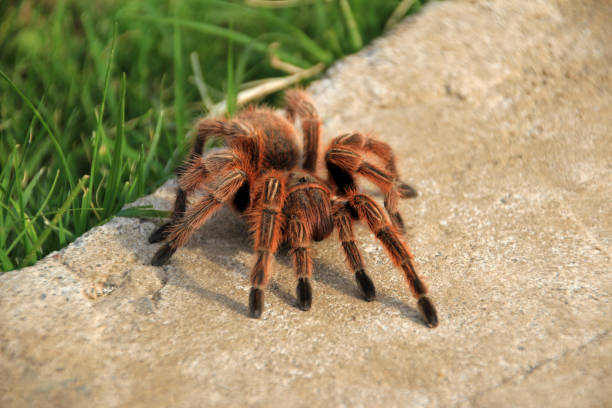
- Size: 4–6 inches (10–15 cm) leg span
- Weight: Up to 3 ounces (85 grams)
- Serious Predatory Facts: Uses venomous fangs to immobilize insects and other small prey.
- Interesting Facts: Liquefies prey with digestive enzymes and slurp it up like soup.
- Fun Fact: Flicks tiny, irritating hairs at predators when feeling threatened—a unique tarantula defense mechanism.
4. Piranha

Wikimedia Commons
- Size: 6–13 inches (15–33 cm) long
- Weight: 2–8 pounds (0.9–3.6 kg)
- Serious Predatory Facts: Razor-sharp teeth and powerful bite can strip prey of flesh in seconds.
- Interesting Facts: Typically scavengers, piranhas only attack in a frenzy when starved or provoked.
- Fun Fact: Piranhas communicate with clicking and grunting noises, especially when defending territory.
5. Kingfisher
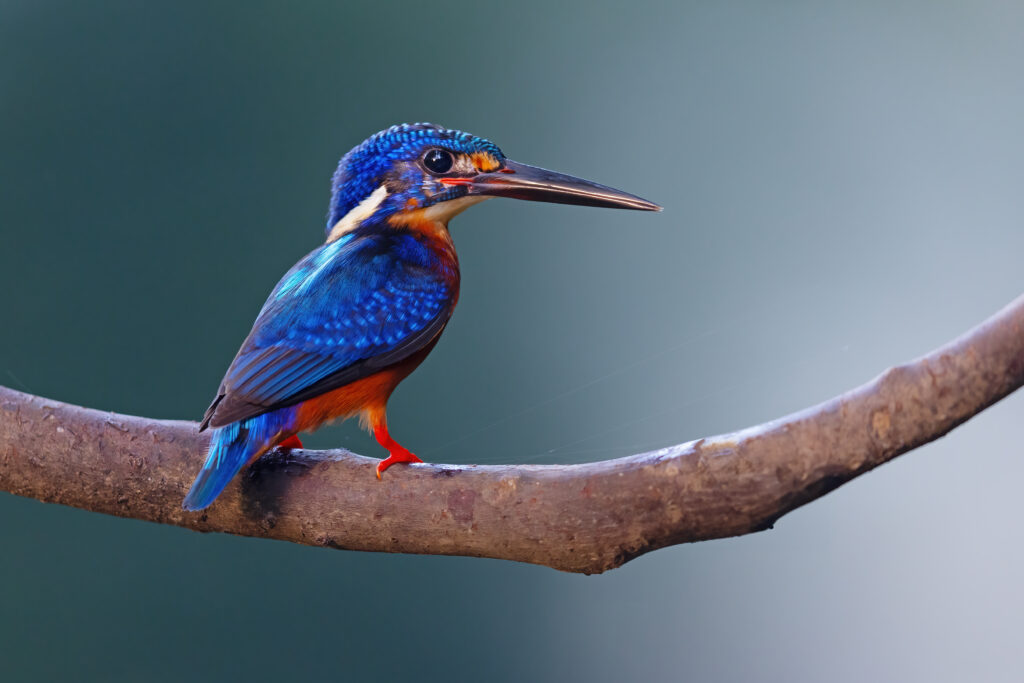
Wikimedia Commons
- Size: 5–10 inches (13–25 cm) long
- Weight: Up to 5 ounces (142 grams)
- Serious Predatory Facts: Dives like a torpedo to catch fish with its sharp beak.
- Interesting Facts: Can hover above water briefly before striking prey.
- Fun Fact: Some species dig tunnel-like nests into riverbanks, turning them into miniature fortresses.
6. Tasmanian Devil

Shutterstock: PhotocechCZ
- Size: 20–31 inches (50–80 cm) long
- Weight: 14–26 pounds (6.5–12 kg)
- Serious Predatory Facts: Bone-crushing jaws allow it to consume almost every part of its prey, including bones.
- Interesting Facts: These fierce marsupials clean up ecosystems by scavenging carrion.
- Fun Fact: Their screeches are so loud and eerie that they earned their “devil” nickname.
7. Red Fox
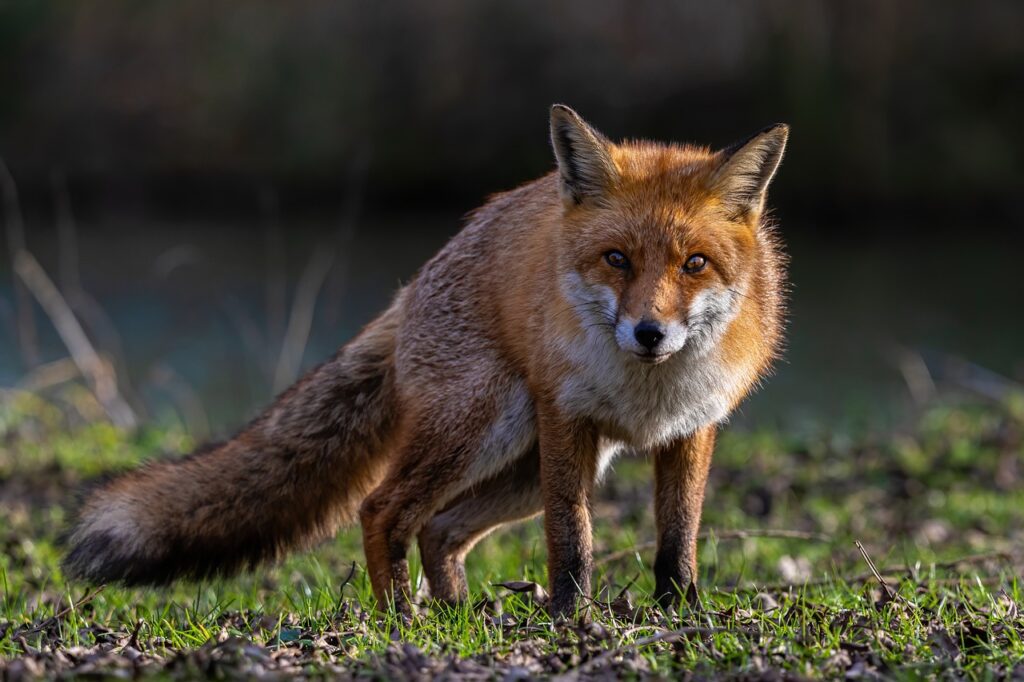
Pixabay
- Size: 20–35 inches (50–90 cm) long (excluding tail)
- Weight: 8–15 pounds (3.6–6.8 kg)
- Serious Predatory Facts: Uses sharp hearing and pouncing techniques to catch rodents and birds.
- Interesting Facts: Can hear small prey underground thanks to their exceptional low-frequency hearing.
- Fun Fact: Their tails serve as blankets during cold nights and signals during hunts.
8. Vlamingii Tang (Blue-Spotted Unicornfish)

Shutterstock
- Size: Up to 24 inches (61 cm) long
- Weight: Around 2 pounds (0.9 kg)
- Serious Predatory Facts: Though primarily a grazer, its sharp tail spines can fend off predators.
- Interesting Facts: Changes colors depending on mood or surroundings, blending in easily.
- Fun Fact: It’s a favorite in aquariums but handling it is tricky due to its defensive tail spines.
9. Peregrine Falcon

- Size: 13–23 inches (34–59 cm) long, 3.3-foot (1-meter) wingspan
- Weight: 1.5–3.5 pounds (0.7–1.6 kg)
- Serious Predatory Facts: The fastest animal on Earth, reaching speeds of over 240 mph (386 km/h) in a dive.
- Interesting Facts: Has special nostril adaptations to breathe at high speeds.
- Fun Fact: Sometimes plays with prey mid-air, dropping and re-catching it for practice.
10. Snowy Owl
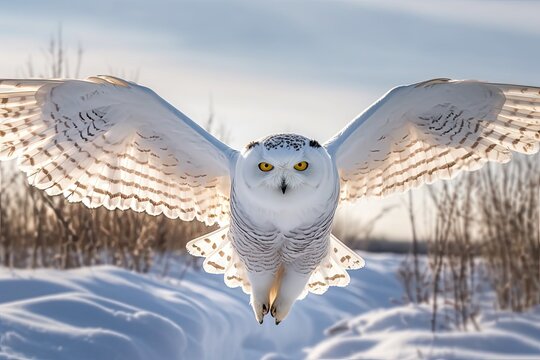
Adobe
- Size: 20–28 inches (50–71 cm) long, wingspan up to 5 feet (1.5 meters)
- Weight: 3.5–6.5 pounds (1.6–3 kg)
- Serious Predatory Facts: Hunts lemmings and other small mammals with stealth and precision.
- Interesting Facts: These owls can eat up to 1,600 lemmings in a year!
- Fun Fact: Their feathers are so fluffy they can keep warm in sub-zero temperatures while hunting.
11. African Wild Dog

Pixabay
- Size: 24–30 inches (60–75 cm) tall
- Weight: 40–70 pounds (18–32 kg)
- Serious Predatory Facts: Cooperative hunters with a success rate of over 80% when targeting antelope.
- Interesting Facts: Use a unique “chirping” sound to coordinate during hunts.
- Fun Fact: Their colorful fur patterns are as unique as human fingerprints.
12. Cheetah

- Size: 3.5–4.5 feet (1–1.4 meters) long (excluding tail)
- Weight: 77–143 pounds (35–65 kg)
- Serious Predatory Facts: The fastest land animal, reaching speeds of 70 mph (112 km/h) to catch prey.
- Interesting Facts: Accelerates from 0 to 60 mph in just 3 seconds, rivaling sports cars.
- Fun Fact: Cheetahs chirp like birds to communicate with their cubs and other cheetahs.
13. Leopard

Pixabay
- Size: 4–6.5 feet (1.2–2 meters) long (excluding tail)
- Weight: 66–176 pounds (30–80 kg)
- Serious Predatory Facts: Solitary hunters that carry prey into trees to avoid scavengers.
- Interesting Facts: Known to adapt to a wide range of habitats, from rainforests to deserts.
- Fun Fact: Black leopards, or “panthers,” are just leopards with extra melanin in their coats.
14. Bengal Tiger

Pixabay
- Size: 8–10 feet (2.4–3 meters) long (excluding tail)
- Weight: 400–570 pounds (180–260 kg)
- Serious Predatory Facts: Uses stealth and power to ambush prey, capable of taking down large animals like buffalo.
- Interesting Facts: Tigers are strong swimmers and often hunt in water.
- Fun Fact: Each tiger’s stripes are unique, making them identifiable like human fingerprints.
15. Grizzly Bear

- Size: 6.5–8 feet (2–2.5 meters) long
- Weight: 400–790 pounds (180–360 kg)
- Serious Predatory Facts: Known for their powerful swipes, a single paw strike can break bones or kill large prey.
- Interesting Facts: Grizzlies can run up to 35 mph (56 km/h), despite their massive size.
- Fun Fact: Grizzly bears use their keen sense of smell to detect food from up to 20 miles away!
16. Nile Crocodile

Shutterstock
- Size: 10–16 feet (3–4.8 meters) long
- Weight: 500–1,650 pounds (225–750 kg)
- Serious Predatory Facts: Ambushes prey by lunging from water, dragging it down to drown with a “death roll.”
- Interesting Facts: They are responsible for hundreds of human deaths annually in Africa.
- Fun Fact: They can go without eating for months, surviving on stored energy from previous meals.
17. Great White Shark

- Size: 15–20 feet (4.5–6 meters) long
- Weight: 1,500–4,000 pounds (680–1,800 kg) •
- Serious Predatory Facts: Known for breaching, great whites attack prey from below at speeds of up to 25 mph.
- Interesting Facts: Great whites have over 300 serrated teeth, which constantly regenerate.
- Fun Fact: Despite their fearsome reputation, great whites are naturally curious and often “test-bite” before deciding if something is food.
18. Saltwater Crocodile
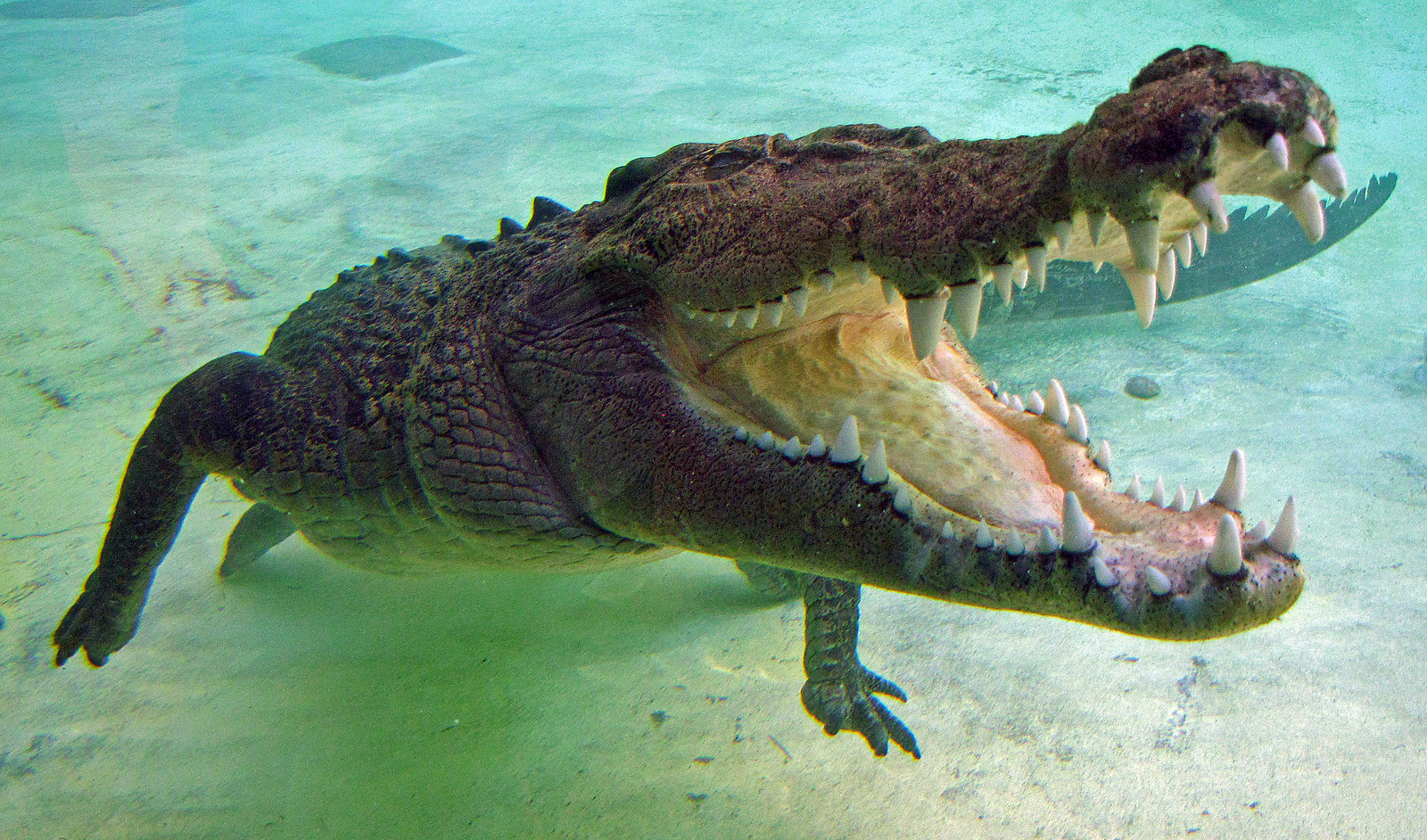
- Size: 15–23 feet (4.5–7 meters) long
- Weight: 1,000–2,200 pounds (450–1,000 kg)
- Serious Predatory Facts: The largest and most aggressive reptile, capable of killing prey as large as water buffalo.
- Interesting Facts: Their bite force exceeds 3,700 pounds per square inch—the strongest of any animal.
- Fun Fact: Young crocodiles emit squeaks to call for their mother, showcasing surprising maternal care.
19. Blue Whale

- Size: 80–100 feet (24–30 meters) long
- Weight: Up to 200 tons (180,000 kg)
- Serious Predatory Facts: While not a predator of large animals, they are the largest filter feeders, consuming up to 4 tons of krill daily.
- Interesting Facts: Their heart is the size of a small car, and their tongue weighs as much as an elephant.
- Fun Fact: Blue whales communicate with low-frequency calls that can travel thousands of miles underwater.
20. Orca (Killer Whale)

- Size: 20–26 feet (6–8 meters) long
- Weight: 8,000–12,000 pounds (3,600–5,400 kg)
- Serious Predatory Facts: Apex predators of the ocean, hunt in pods, preying on seals, sharks, and even blue whale calves.
- Interesting Facts: Orcas have distinct dialects within pods and pass down hunting techniques through generations.
- Fun Fact: They’ve been seen playing with their food, tossing seals into the air before eating them.
21. Giant Squid

YouTube
- Size: Up to 43 feet (13 meters) long (including tentacles)
- Weight: Up to 600 pounds (275 kg)
- Serious Predatory Facts: It uses its tentacles equipped with sharp-toothed suckers to grab and immobilize prey.
- Interesting Facts: Giant squid are rarely seen alive, but their battles with sperm whales have inspired legends.
- Fun Fact: Their eyes are as large as a dinner plate, allowing them to see in the ocean’s dark depths.
22. Harpy Eagle
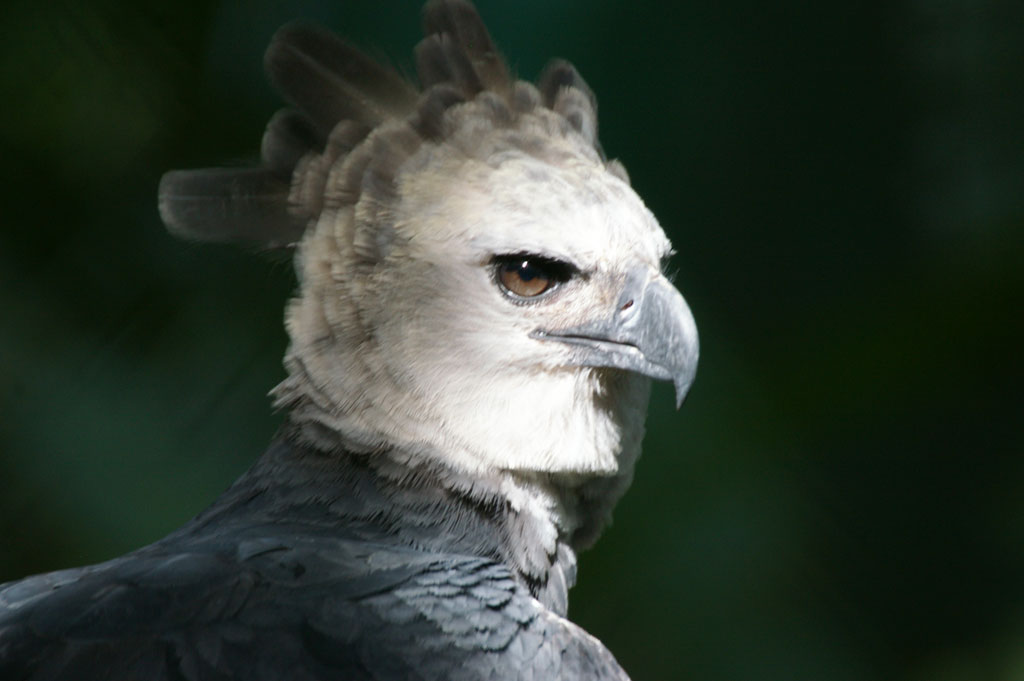
- Size: 3–3.5 feet (90–110 cm) long, wingspan up to 6.5 feet (2 meters)
- Weight: 11–20 pounds (5–9 kg)
- Serious Predatory Facts: Equipped with talons larger than a grizzly bear’s claws, they hunt sloths and monkeys from treetops.
- Interesting Facts: Harpy eagles are named after mythical creatures due to their striking appearance and power.
- Fun Fact: They use their massive talons to carry prey twice their weight while flying!
23. American Alligator

- Size: 11–15 feet (3.3–4.5 meters) long
- Weight: 450–1,000 pounds (200–450 kg)
- Serious Predatory Facts: Known for their ambush attacks, they strike quickly, dragging prey underwater to drown.
- Interesting Facts: Alligators can replace each of their teeth up to 50 times in their lifetime.
- Fun Fact: Juvenile alligators make chirping sounds to call their mothers when in danger.
24. Bengal Tiger

• Size: 8–10 feet (2.4–3 meters) long (excluding tail)
• Weight: 400–570 pounds (180–260 kg)
• Serious Predatory Facts: With powerful jaws and claws, Bengal tigers can bring down prey as large as water buffalo.
• Interesting Facts: Tigers are strong swimmers, often crossing rivers and hunting in water.
• Fun Fact: A tiger’s roar can be heard up to 2 miles away.
25. Humans

Shutterstock
- Size: 5–6.5 feet (1.5–2 meters) tall
- Weight: 100–250 pounds (45–113 kg)
- Serious Predatory Facts: The most dangerous predator due to intelligence, tools, and global environmental dominance.
- Interesting Facts: Humans have hunted almost every apex predator on this list to near extinction at some point.
26. Honey Badger

Pixabay
- Size: 22–30 inches (56–76 cm) long
- Weight: 13–30 pounds (6–14 kg)
- Serious Predatory Facts: Known for fearlessness, they attack venomous snakes, lions, and even humans when threatened.
- Interesting Facts: Honey badgers have loose skin, allowing them to twist and bite attackers even when pinned.
27. Wedge-Tailed Eagle

Flickr
- Size: Up to 3.5 feet (1 meter) long, wingspan of 7.5–9 feet (2.3–2.7 meters)
- Weight: 7–13 pounds (3–6 kg)
- Serious Predatory Facts: Capable of killing kangaroos and even small livestock with their powerful talons.
- Interesting Facts: Known to hunt cooperatively and use soaring tactics to ambush prey.
28. Snow Leopard

- Size: 3–4.5 feet (0.9–1.4 meters) long (excluding tail)
- Weight: 60–120 pounds (27–55 kg)
- Serious Predatory Facts: Silent hunters that ambush prey and can leap up to 50 feet in a single bound.
- Interesting Facts: Snow leopards can live in temperatures as low as -40°F (-40°C) thanks to their dense fur.
- Fun Fact: They are called the “ghosts of the mountains” due to their elusive nature.
29. Puma (Mountain Lion)
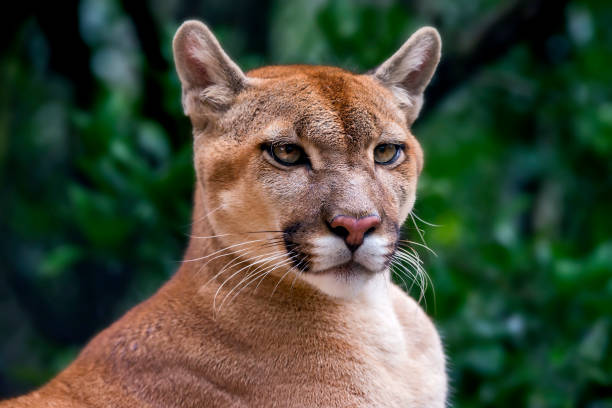
- Size: 3.5–5 feet (1.1–1.5 meters) long (excluding tail)
- Weight: 64–220 pounds (29–100 kg)
- Serious Predatory Facts: A solitary stalker that can bring down deer and even elk with a single pounce.
- Fun Fact: Their tails can grow almost as long as their bodies, helping with balance during leaps.
30. Arctic Wolf

- Size: 3–5 feet (1–1.5 meters) long
- Weight: 70–175 pounds (32–80 kg)
- Serious Predatory Facts: Form packs to hunt caribou and musk oxen in the Arctic tundra.
- Interesting Facts: Their white fur provides camouflage against snowy landscapes.
31. Goliath Tigerfish

Wikimedia Commons
- Size: Up to 4.5 feet (1.4 meters) long
- Weight: Up to 110 pounds (50 kg)
- Serious Predatory Facts: Known for razor-sharp teeth and a ferocious bite that can split prey in seconds.
- Interesting Facts: Its teeth resemble daggers and are so large they protrude from its mouth.
- Fun Fact: Often called the “piranha on steroids,” the Goliath tigerfish is feared even by fishermen!
32. Leopard Seal
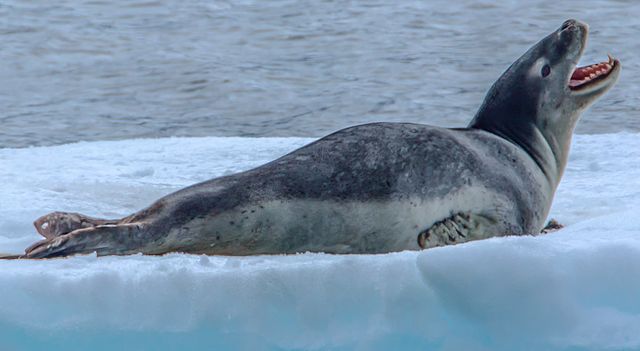
Wikimedia Commons
- Size: 7.5–12 feet (2.3–3.6 meters) long
- Weight: 440–1,320 pounds (200–600 kg)
- Serious Predatory Facts: Apex predator in the Antarctic, preying on penguins, fish, and smaller seals.
- Interesting Facts: Leopard seals can open their jaws nearly 160 degrees to grab prey.
- Fun Fact: They’ve been seen “playing” with penguins before eating them, tossing them around like toys.
33. African Lion

Flickr
- Size: 4.5–6.5 feet (1.4–2 meters) long (excluding tail)
- Weight: 265–420 pounds (120–190 kg)
- Serious Predatory Facts: Hunts in prides, often taking down prey much larger than themselves, like buffalo.
- Interesting Facts: Lions are the only big cats to live in groups, relying on teamwork for hunting.
- Fun Fact: Male lions sleep up to 20 hours a day, leaving the hunting to the females.
34. Giant Pacific Octopus
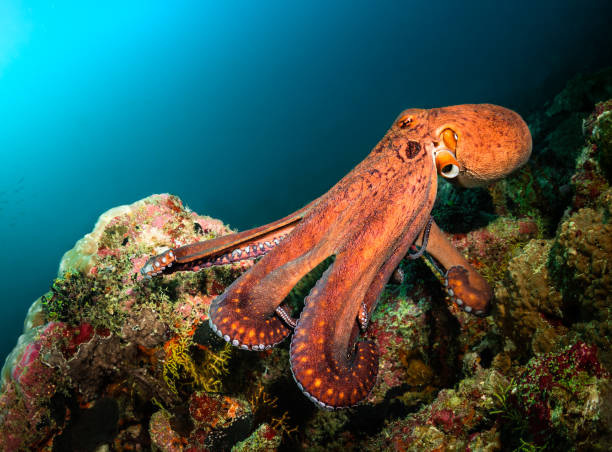
- Size: Arm span up to 16 feet (5 meters)
- Weight: Up to 110 pounds (50 kg)
- Serious Predatory Facts: Uses its eight powerful arms to trap and crush prey like crabs and fish.
- Interesting Facts: Known for their intelligence, they can solve puzzles and open jars to access food.
- Fun Fact: They can change both color and texture to blend seamlessly into their surroundings.
35. Electric Eel
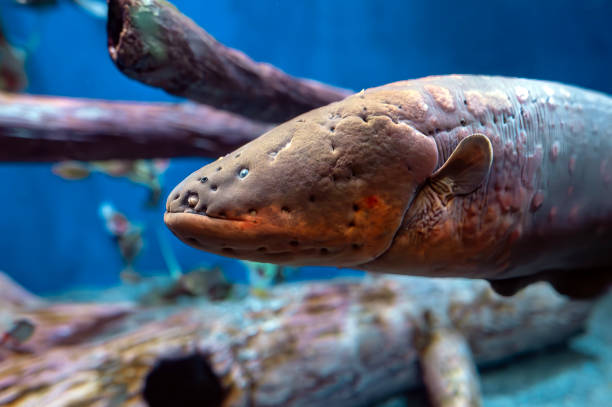
- Size: 6–8 feet (1.8–2.5 meters) long
- Weight: 40–50 pounds (18–22 kg)
- Serious Predatory Facts: Delivers electric shocks up to 600 volts to stun prey and deter predators.
- Interesting Facts: Electric eels breathe air and must surface every 10 minutes despite living in water.
- Fun Fact: They use their electric pulses to navigate murky waters like a built-in radar system.
36. Komodo Dragon
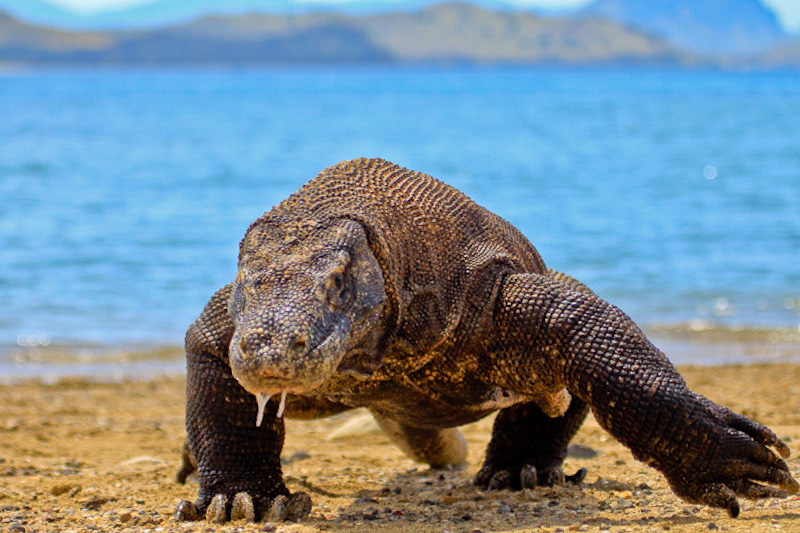
Flickr
- Size: 8–10 feet (2.4–3 meters) long
- Weight: 150–300 pounds (70–136 kg)
- Serious Predatory Facts: Uses venom and a bacteria-filled bite to incapacitate and kill large prey, like deer and water buffalo.
- Interesting Facts: Komodo dragons can run up to 12 mph (19 km/h) and swim between islands to hunt.
- Fun Fact: They’ve been seen “playing” with objects like sticks, showing signs of intelligence and curiosity.
37. Golden Eagle
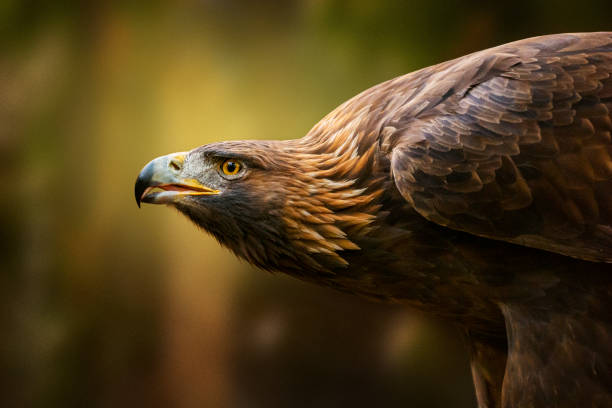
- Size: 26–40 inches (66–102 cm) long, wingspan up to 7.5 feet (2.3 meters)
- Weight: 6.5–15 pounds (3–7 kg)
- Serious Predatory Facts: Hunts prey such as rabbits, foxes, and even young deer using sharp talons.
- Interesting Facts: Can dive at speeds of 150 mph (241 km/h) to snatch prey.
- Fun Fact: Golden eagles sometimes “drag” prey off cliffs to kill them before eating.
38. Polar Bear

Wikimedia Commons
- Size: 7.5–10 feet (2.3–3 meters) long
- Weight: 770–1,540 pounds (350–700 kg)
- Serious Predatory Facts: Ambush hunters prey on seals and can break ice to reach them.
- Interesting Facts: Polar bears are the largest land carnivores in the world.
- Fun Fact: Their fur isn’t actually white; it’s translucent and reflects visible light.
39. Anaconda (Green)

- Size: Up to 30 feet (9 meters) long
- Weight: 550 pounds (250 kg)
- Serious Predatory Facts: Constricts prey with incredible force, capable of suffocating animals as large as deer or jaguars.
- Interesting Facts: Green anacondas are the heaviest snakes in the world.
- Fun Fact: Females are larger than males and sometimes eat their mates after breeding!
40. Peregrine Falcon

- Size: 13–23 inches (34–59 cm) long, 3.3-foot (1-meter) wingspan
- Weight: 1.5–3.5 pounds (0.7–1.6 kg)
- Serious Predatory Facts: The fastest animal alive, reaching speeds over 240 mph (386 km/h) during hunting dives.
- Interesting Facts: Peregrine falcons nest on skyscrapers and bridges in urban areas.
- Fun Fact: They “play” with their prey mid-air by dropping and catching it multiple times before eating.
41. American Bald Eagle

- Size: 28–40 inches (71–102 cm) long, wingspan up to 7 feet (2.1 meters)
- Weight: 6.5–14 pounds (3–6.3 kg)
- Serious Predatory Facts: Powerful talons allow it to snatch fish and small mammals mid-flight.
- Interesting Facts: Bald eagles can carry prey weighing up to half their body weight.
- Fun Fact: They aren’t truly bald—their name comes from an old term meaning “white-headed.”
42. Hyena
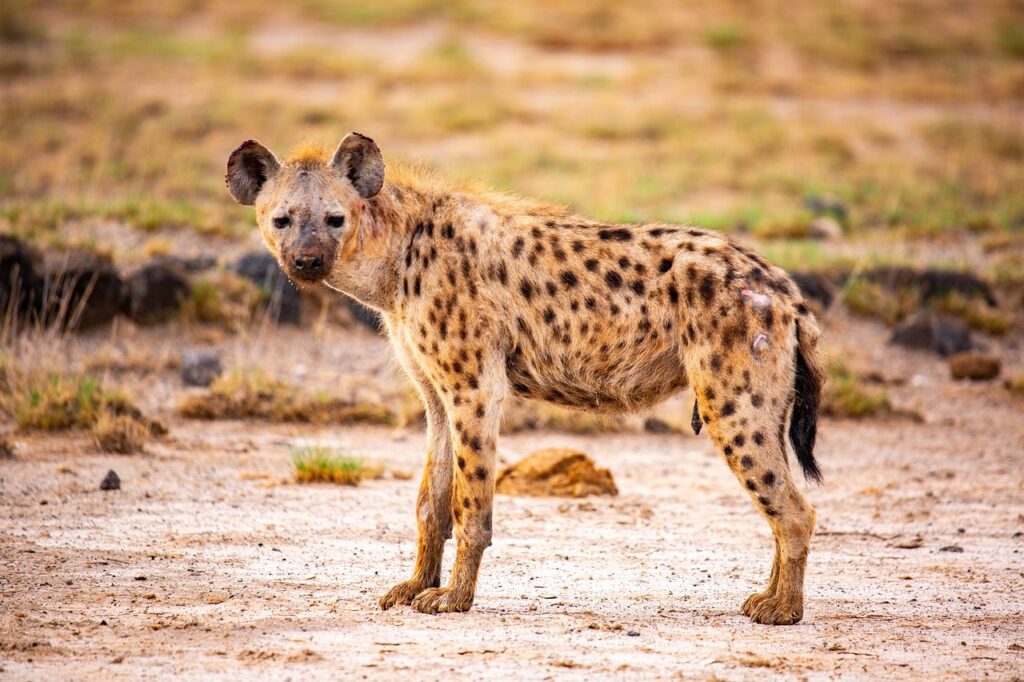
Pixabay
- Size: 3–5 feet (1–1.5 meters) long
- Weight: 90–190 pounds (40–86 kg)
- Serious Predatory Facts: Known for their bone-crushing jaws, hyenas can devour almost every part of their prey.
- Interesting Facts: Hyenas live in matriarchal societies where females dominate males.
- Fun Fact: Their “laugh” is actually a form of communication, used to signal excitement or submission.
43. Tasmanian Tiger (Extinct but worth noting as an apex predator)

YouTube
- Size: 39–51 inches (1–1.3 meters) long (excluding tail)
- Weight: 40–70 pounds (18–32 kg)
- Serious Predatory Facts: Stalked prey at night, targeting small to medium-sized mammals and birds.
- Interesting Facts: It could open its jaws nearly 90 degrees wide.
- Fun Fact: Known as a “living fossil” before extinction, the last known Tasmanian tiger died in 1936.
44. Great Barracuda

- Size: 24–72 inches (0.6–1.8 meters) long
- Weight: 10–50 pounds (4.5–22 kg)
- Serious Predatory Facts: Uses its sharp teeth and speed to ambush fish, sometimes leaping out of the water to catch prey.
- Interesting Facts: Known for their fearsome appearance and lightning-fast strikes.
- Fun Fact: They’re attracted to shiny objects, often mistaking them for fish.
45. Sea Otter

- Size: 3–5 feet (1–1.5 meters) long
- Weight: 50–100 pounds (23–45 kg)
- Serious Predatory Facts: Uses rocks as tools to crack open shellfish and sea urchins, preying on hard-shelled marine creatures.
- Interesting Facts: Sea otters hold hands while sleeping to keep from drifting apart.
- Fun Fact: They have the densest fur in the animal kingdom, with up to 1 million hairs per square inch.
46. Osprey

- Size: 20–26 inches (50–66 cm) long, wingspan up to 6 feet (1.8 meters)
- Weight: 3–4.4 pounds (1.4–2 kg)
- Serious Predatory Facts: Specializes in hunting fish, diving feet-first at speeds of up to 50 mph.
- Interesting Facts: Ospreys have reversible outer toes to help grip slippery fish
- Fun Fact: Their nests, or eyries, are often reused for generations, growing up to 10 feet wide.
47. Indian Cobra
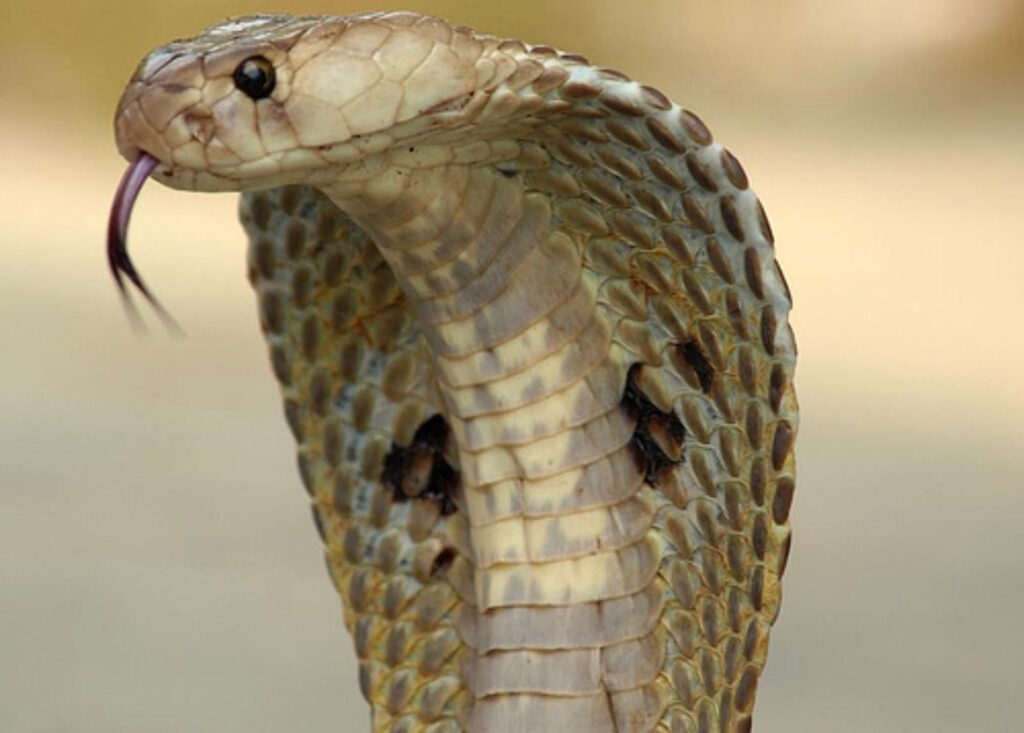
YouTube
- Size: 4–6 feet (1.2–1.8 meters) long
- Weight: Up to 15 pounds (6.8 kg)
- Serious Predatory Facts: Venom is potent enough to kill an elephant, targeting the nervous system.
- Interesting Facts: Cobras “dance” by raising their hood in response to movement, not music.
- Fun Fact: They can spit venom up to 6 feet to blind attackers!
48. Wolverine
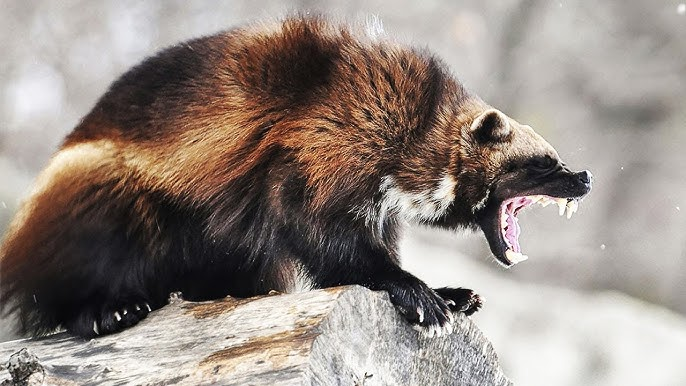
- Size: 2.5–3.5 feet (0.7–1 meter) long
- Weight: 20–70 pounds (9–32 kg)
- Serious Predatory Facts: Known for its ferocity, a wolverine can take down animals much larger than itself, such as deer.
- Interesting Facts: Wolverines are solitary but extremely territorial.
- Fun Fact: They can emit a skunk-like smell to mark territory or scare off predators.
49. Green Moray Eel
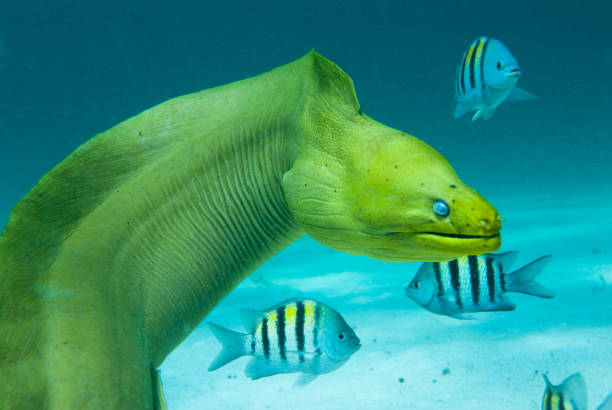
iStock
- Size: 6–8 feet (1.8–2.4 meters) long
- Weight: Up to 65 pounds (29 kg)
- Serious Predatory Facts: Ambush predators that use sharp teeth to trap fish and crustaceans.
- Interesting Facts: Despite their green appearance, their skin is actually brown; the green comes from a layer of mucus.
- Fun Fact: They have a secondary set of jaws, called pharyngeal jaws, to drag prey deeper into their throats.
50. Sperm Whale

Wikimedia Commons
- Size: 49–59 feet (15–18 meters) long
- Weight: 35 to 45 tons (or 32,000 to 41,000 kilograms).
- Serious Predatory Facts: Dives over 3,000 feet deep to hunt giant squid, using echolocation to locate prey in the dark depths.
- Interesting Facts: Sperm whales have the largest brains of any animal on Earth.
- Fun Fact: Their heads contain a waxy substance called spermaceti, used historically in candles and cosmetics.


